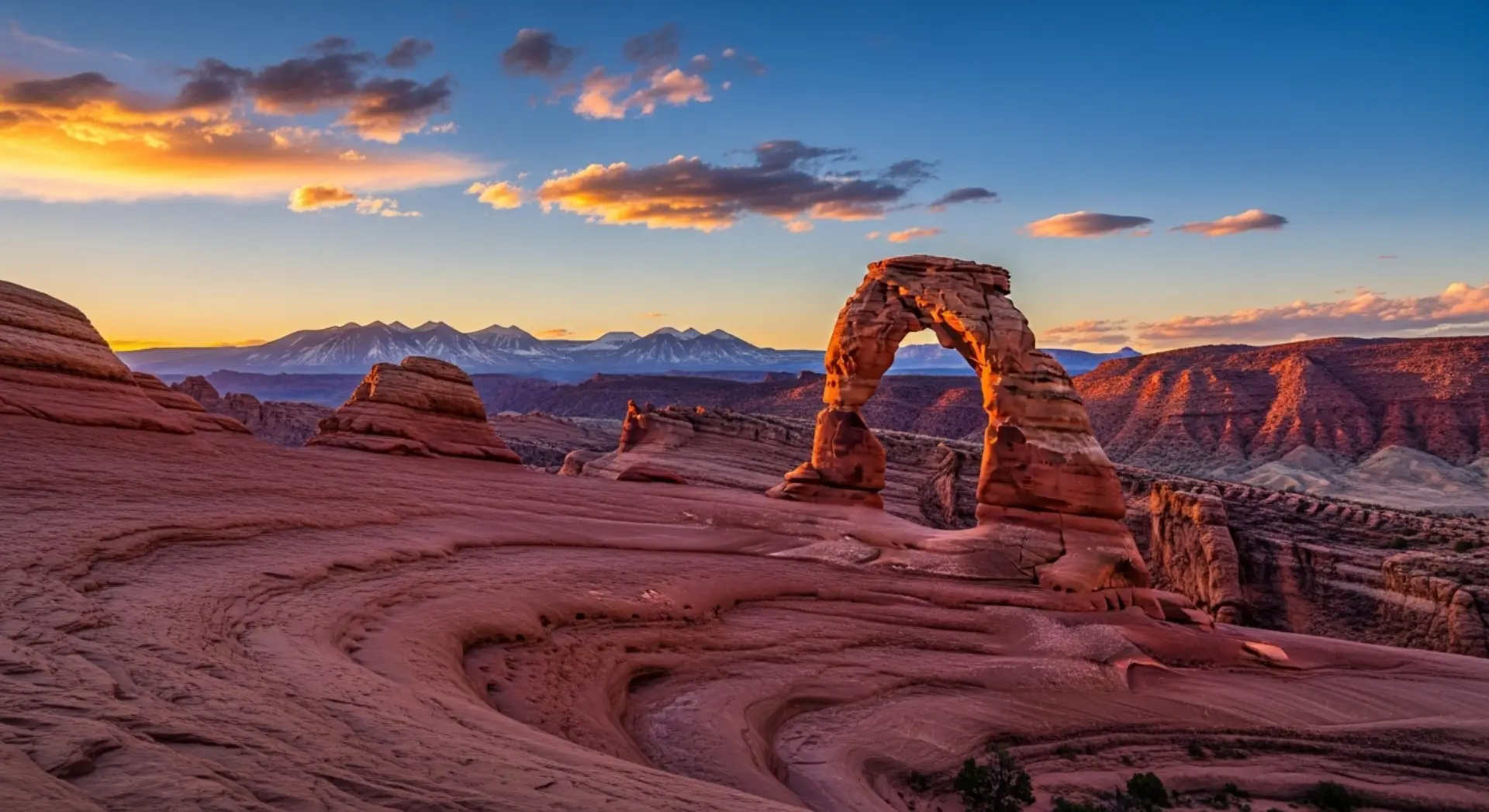Moab Activities: Why Desert Adventure Requires Different Thinking Than Mountain Tourism
Here's what most people misunderstand about Moab activities: this isn't just another outdoor recreation destination with a standard menu of hiking, biking, and scenic drives. Moab operates in a completely different category—a geological accident that created landscapes found nowhere else on Earth, where 200-million-year-old sandstone formations provide adventure opportunities that simply don't exist in mountain terrain, coastal environments, or anywhere else visitors typically seek outdoor experiences.
The Entrada and Navajo sandstone that defines Moab's landscape creates what locals call "slickrock"—a misleading term since these ancient petrified sand dunes provide exceptional traction when clean and dry, allowing vehicles, bikes, and boots to access terrain that would be impossible on typical rock formations. This unique geological substrate means Moab activities follow different rules entirely, where the surface itself becomes part of the challenge and the learning experience rather than just the backdrop for conventional outdoor recreation.
Most people experience maybe 20% of what Moab actually offers because they approach it with mountain recreation expectations, assume standard tourist activities translate to desert environments, or don't understand that the red rock landscape demands different preparation, timing, and equipment than what works in forests, mountains, or coastal areas. The difference between tourists who check boxes on generic activity lists and adventurers who truly experience Moab comes down to understanding that this destination operates on principles entirely its own.
Why Moab's Geology Creates Unique Adventure Opportunities
The sandstone formations around Moab didn't just create pretty scenery—they established functional adventure terrain that responds to human activity in ways that seem almost engineered despite forming 150 million years before anyone imagined motorized recreation or technical climbing. The ancient sand dunes, compressed into rock and then exposed by millions of years of erosion, provide surfaces that grip tires and climbing shoes with surprising effectiveness, creating environments where technique and momentum matter more than raw power or strength.
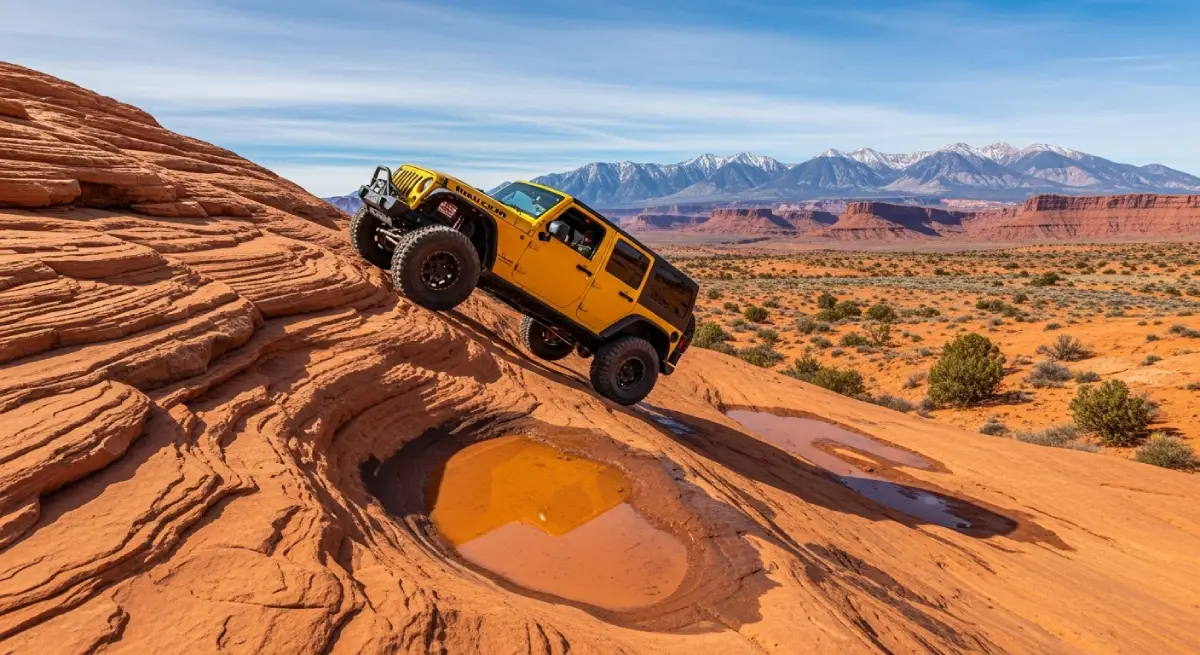
What makes Moab's geological advantages unique:
Slickrock surfaces provide predictable, consistent traction unlike loose dirt or gravel
Natural features include ramps, ledges, and technical challenges formed by geological processes
Rock formations create slot canyons, arches, and terrain features accessible nowhere else
Diverse elevations from 4,000 to 12,000 feet create multiple climate zones within short distances
Colorado River corridor provides water-based activities contrasting with desert terrain
Year-round accessibility with seasonal variations that create different activity opportunities
The geological education advantage: Unlike destinations where scenery serves as background, Moab's landscape actively teaches about geological time, erosion processes, and the forces that shape planetary surfaces over millions of years. Every activity becomes an opportunity to understand Earth systems rather than just consuming outdoor entertainment.
Off-Road Driving: The Definitive Moab Activity
Off-road driving in Moab created the template by which all other 4x4 destinations measure themselves. The slickrock trails that made Moab famous—Hell's Revenge, Poison Spider Mesa, Fins and Things—don't just challenge vehicles and drivers, they fundamentally changed how people think about what's possible with 4x4 capability. These aren't trails that follow existing terrain features; they're routes that discovered how vehicles can interact with slickrock in ways that create genuine adventure rather than just transportation through scenic areas.
Slickrock Driving That Defined a Sport
Hell's Revenge represents the trail that established Moab as the global standard for technical 4x4 adventure. Six and a half miles of steep slickrock climbs, heart-pounding descents, and optional extreme challenges that separate recreational drivers from those seeking genuine skill development. The white dotted line marking the route across bare rock creates a path that seems impossible until you understand how slickrock traction actually works.
Why Hell's Revenge matters beyond just being difficult:
Teaches momentum management and traction principles that apply everywhere
Builds confidence through progressive challenges with bypass options
Provides immediate feedback about vehicle capability and driver skill
Creates photographic opportunities that capture adventure rather than just scenery
Offers achievement that justifies the preparation and effort required
Technical Trails for Progressive Skill Development
Fins and Things provides the perfect introduction to Moab's signature slickrock terrain without the extreme exposure or mandatory obstacles that make Hell's Revenge intimidating for first-timers. The rolling fins create a roller-coaster experience across undulating sandstone, teaching how vehicles respond to slickrock surfaces while maintaining safety margins that allow learning without catastrophic consequences for mistakes.
Progressive trail system for skill building:
Beginner routes (Gemini Bridges, Shafer Trail) introduce Moab terrain gently
Intermediate challenges (Fins and Things, Chicken Corners) build specific technical skills
Advanced trails (Poison Spider Mesa, Hell's Revenge) demand refined technique and confidence
Expert terrain (Pritchett Canyon, Behind the Rocks) tests limits for the most capable
Why Professional Jeep Rentals Transform the Experience
Attempting Moab's technical trails in personal vehicles creates complications that professional rental services eliminate: insurance limitations for off-road activities, lack of slickrock-specific modifications, and absence of local knowledge about which trails match actual skill levels versus optimistic self-assessment. Cliffhanger Jeep Rentals operates purpose-built vehicles designed specifically for Moab's unique terrain, with modifications proven through thousands of successful trail completions.
Professional rental advantages for Moab off-roading:
Vehicles modified specifically for slickrock traction and technical capability
Local expertise about current trail conditions and appropriate difficulty matching
Comprehensive insurance for off-road activities that personal policies exclude
No long-term ownership costs for specialized equipment used occasionally
Emergency support when situations exceed expectations or equipment limits
ATV and UTV Adventures on Legendary Terrain
ATV riding in Moab provides access to terrain that created the modern understanding of what all-terrain vehicles can actually accomplish on technical surfaces. The same slickrock formations that made Jeep trails famous create ATV opportunities where individual rider skill directly determines what's possible, building capabilities that transfer to all other riding environments while providing challenges that exist nowhere else.
Traditional ATVs for Technical Mastery
Traditional ATVs excel on Moab's slickrock because their compact dimensions, low center of gravity, and direct rider-machine connection create feedback that teaches balance, traction management, and momentum control in ways that larger, more insulated vehicles cannot match. The learning happens through the seat and handlebars—immediate, undiluted information about what works and what doesn't when challenging terrain demands precise technique.
Why traditional ATVs provide superior skill development:
Direct connection between rider input and machine response teaches finesse
Compact size allows navigation through tight spaces and technical lines
Low center of gravity provides stability on steep slickrock climbs
Individual focus eliminates passenger concerns, allowing pure technique development
Side-by-Side UTVs for Shared Experiences
Side-by-side UTVs prioritize comfort, safety, and shared experiences over pure technical performance, making them ideal for mixed-skill groups or families who want to explore Moab's terrain together. The enclosed design with roll cage protection and steering wheel control creates familiar environments that reduce intimidation while providing access to spectacular landscapes.
UTV advantages for accessibility:
Roll cage protection and seat belts provide security for nervous riders
Passenger seating allows couples and families to share adventures
Weather protection and ergonomic seating reduce fatigue on longer rides
Stability and size compensate for limited riding experience
Hiking and Backpacking in Desert Canyon Country
Hiking in Moab operates on desert principles that differ fundamentally from mountain or forest trail experiences. The exposed terrain, minimal shade, and technical route-finding through slickrock and canyon systems create challenges that reward preparation while punishing the assumptions that work in other environments. Water management, sun protection, and navigation skills become critical rather than optional considerations.
Iconic Day Hikes That Showcase Geology
Delicate Arch in Arches National Park represents perhaps the most photographed natural feature in Utah, but the three-mile roundtrip hike that reaches it teaches important lessons about desert hiking that apply throughout Moab. The exposed slickrock traverse with minimal shade demonstrates why early morning starts matter, how water requirements increase dramatically in desert conditions, and why understanding your physical limits prevents dangerous situations.
Essential Moab day hikes:
Delicate Arch (3 miles): Iconic arch with exposed slickrock traverse
Corona Arch (3 miles): Massive arch accessible via moderate trail with cable assists
Negro Bill Canyon (4 miles): Riparian corridor leading to Morning Glory Natural Bridge
Fisher Towers (4.4 miles): Dramatic towers with technical sections and exposure
Hidden Valley Trail (variable): Network connecting multiple trail systems in behind-the-rocks area
Backcountry and Multi-Day Adventures
Canyonlands National Park backcountry provides multi-day hiking opportunities through terrain that few visitors ever see, where self-sufficiency requirements and navigation challenges create genuine wilderness experiences. The Needles District trail system offers dozens of routes through slot canyons, across slickrock expanses, and into areas where seeing another human becomes unlikely rather than guaranteed.
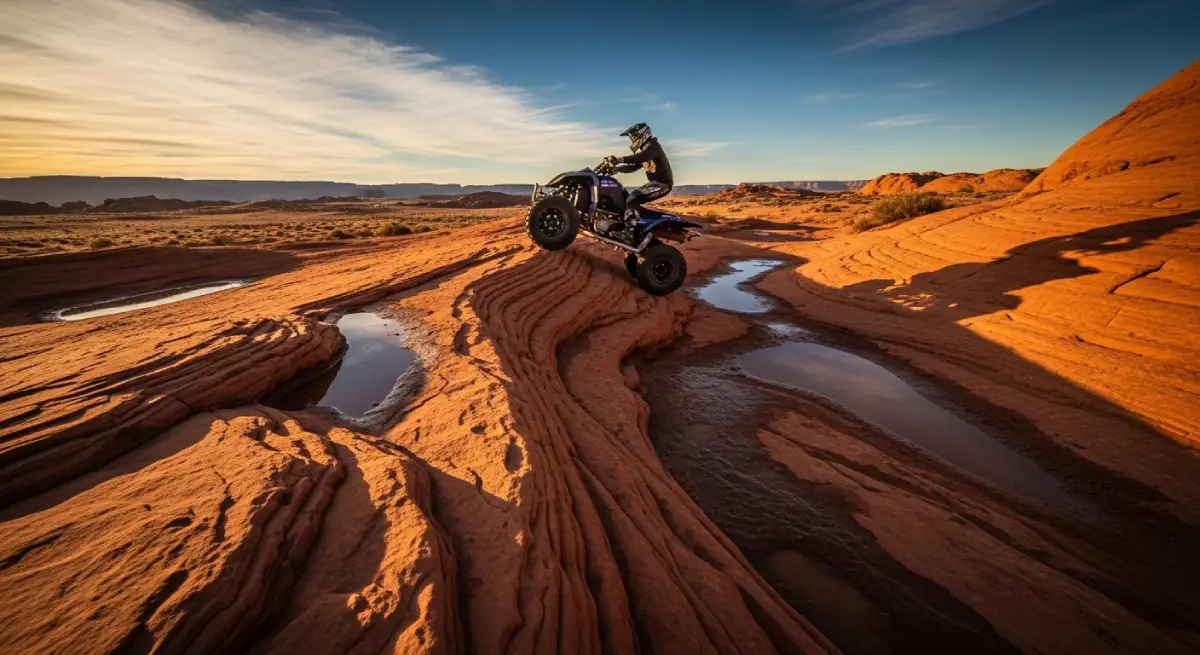
Backcountry considerations for desert hiking:
Water caching requirements for multi-day routes without reliable sources
Navigation through cairn-marked routes requiring map and compass skills
Permit systems that limit usage and maintain wilderness character
Extreme temperature variations requiring both sun and cold weather gear
Flash flood awareness in slot canyons and drainage systems
Rock Climbing on World-Class Sandstone
Moab's sandstone towers and walls provide rock climbing that built reputations and defined careers, where ancient sand dunes compressed into vertical walls create routes that demand technique, gear placement skills, and comfort with exposure that makes mistakes highly visible. The climbing here isn't just challenging—it's educational, teaching crack technique, desert rock characteristics, and the relationship between geological forces and climbing movement.
Desert Tower Climbing
The Fisher Towers provide some of the most spectacular tower climbing in North America, where soft Cutler sandstone creates routes that demand delicate movement and careful gear placement. Ancient Art, the most photographed tower, offers moderate difficulty (5.8) but requires comfort with exposure and multi-pitch climbing skills that test mental composure as much as physical capability.
Classic Moab climbing areas:
Fisher Towers: Soft sandstone towers with dramatic exposure
Indian Creek: Splitter cracks in Wingate sandstone (crack climbing paradise)
Wall Street: Limestone cliff near Moab with sport climbing routes
Castle Valley: Tower climbing in spectacular red rock settings
Ice Nine: Seasonal ice climbing in shaded canyon environments
Sport and Traditional Climbing Opportunities
Wall Street provides the rare limestone cliff in Moab's sandstone-dominated landscape, offering sport climbing routes that range from beginner-friendly to expert-level challenges. The short approach and variety of difficulties make it ideal for groups with mixed skill levels or for getting volume when conditions elsewhere prove unsuitable.
Mountain Biking on Legendary Trails
Mountain biking in Moab created many of the techniques and equipment innovations that define modern trail riding. The Slickrock Bike Trail—one of the world's most famous mountain bike routes—established the template for technical trail riding on bare rock surfaces, teaching riders how momentum, line selection, and bike handling interact on terrain that seems impossible until you experience how slickrock traction actually works.
The Slickrock Bike Trail Legacy
The Slickrock Bike Trail's 10.5-mile main loop across petrified sand dunes created mountain biking as a sport distinct from road cycling or casual trail riding. The white dashed line marking the route across bare rock leads riders through climbs that seem too steep, descents that appear too dangerous, and sections where understanding momentum becomes the difference between flowing success and walking your bike.
Why Slickrock changed mountain biking:
Proved that bikes could handle terrain previously considered impossible
Taught techniques that transfer to all other riding environments
Created demand for full-suspension bikes and technical components
Established Moab as the global destination for serious mountain bikers
Trail Systems for All Skill Levels
The Moab Brand Trails system provides options ranging from gentle cross-country routes to technical challenges that test expert riders. The interconnected network allows route customization based on actual capability rather than optimistic self-assessment, with bailout options and progressive difficulty that builds skills systematically.
Essential mountain bike trails:
Slickrock Bike Trail (10.5 miles): Legendary technical slickrock challenge
Porcupine Rim (30 miles): Epic descent with shuttle options, spectacular views
Magnificent 7 (16 miles): Technical single track through varied terrain
Moab Brand Trails (variable): Network with options for all skill levels
Captain Ahab (8 miles): Technical descent requiring advanced skills
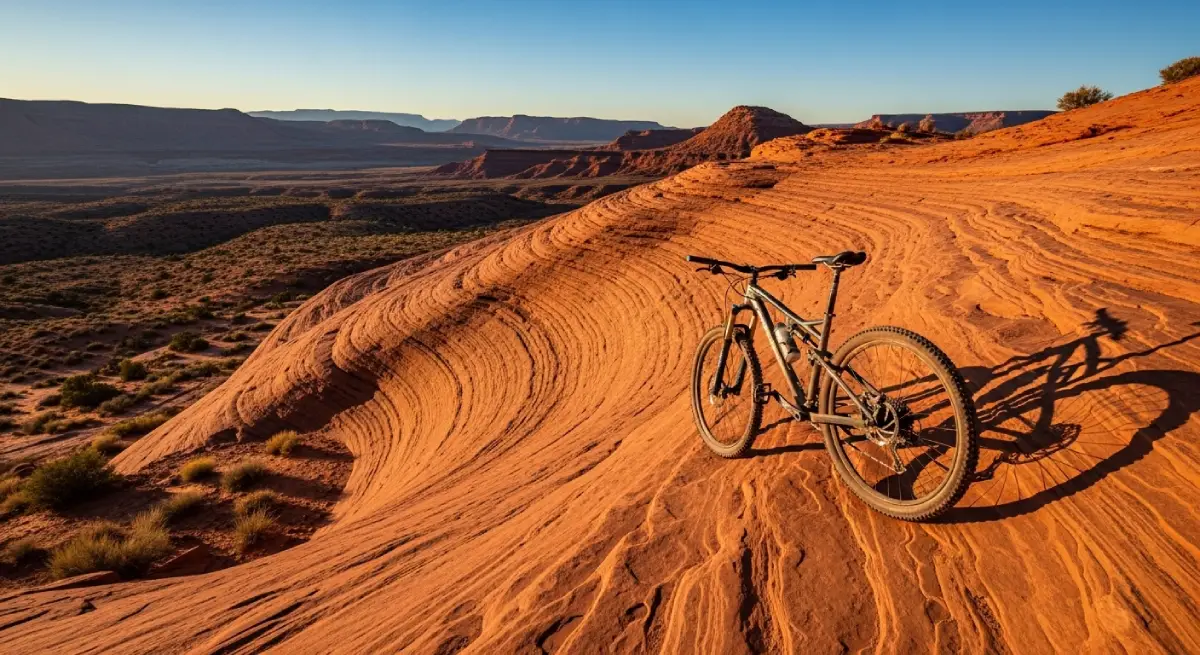
Water-Based Activities on the Colorado River
The Colorado River provides dramatic contrast to Moab's desert terrain, offering water-based activities through canyon systems carved over millions of years. Rafting, kayaking, and stand-up paddleboarding through these corridors create perspectives on geological scale and erosion processes that land-based activities cannot match.
Rafting Through Geological Time
Multi-day rafting trips through Cataract Canyon provide white water excitement combined with geological education as the river cuts through rock layers representing hundreds of millions of years. The rapids—Big Drop, Satan's Gut, The Cataract—create genuine challenges while the calm sections between allow appreciation for the forces that carved these canyons.
Colorado River water activities:
Daily float trips: Gentle sections through scenic canyon corridors
Multi-day expeditions: Cataract Canyon with Class III-IV rapids
Stand-up paddleboarding: Calm sections near town for scenic perspectives
Kayaking: Technical river running for experienced paddlers
Seasonal Timing That Affects Activity Selection
Moab activities require seasonal awareness because desert conditions create dramatic variations in what's possible, comfortable, or even safe based on temperature, precipitation, and daylight hours. Understanding these patterns allows optimization of activity selection rather than fighting against environmental realities that determine enjoyment levels regardless of determination.
Spring Prime Time (March-May)
Spring provides ideal conditions for most Moab activities, with moderate temperatures, blooming desert wildflowers, and stable weather patterns. The season offers the widest range of comfortable activity options before summer heat makes midday desert exposure dangerous rather than just uncomfortable.
Spring activity advantages:
Comfortable temperatures for all-day hiking and biking
Optimal off-roading conditions without extreme heat stress
Wildflower blooms providing photographic opportunities
River flows adequate for water activities without extreme high water
Summer Heat Management (June-August)
Summer in Moab demands activity timing that respects desert heat realities rather than hoping determination overcomes physics. Morning starts before 7 AM and evening activities after 6 PM provide comfortable windows, while midday becomes suitable only for water-based activities or air-conditioned recovery.
Summer timing strategies:
Morning activities (5 AM - 10 AM) before dangerous heat develops
Midday water activities or rest in air conditioning
Evening adventures (6 PM - sunset) as temperatures moderate
Night activities under star-filled desert skies

Fall Optimal Window (September-November)
Fall combines comfortable temperatures with spectacular lighting and fewer crowds than spring peak season. The moderate conditions allow all-day activity without summer's heat restrictions while maintaining reliable weather patterns that make multi-day planning feasible.
Winter Opportunities (December-February)
Winter provides excellent conditions for four-wheel drive adventures, mountain biking in sun-exposed areas, and hiking during the warmest part of the day. The low-angle winter light creates spectacular photography conditions while the absence of crowds makes popular areas accessible without typical congestion.
Professional Guidance and Equipment Access
Moab activities reach their full potential when proper equipment and local expertise combine to eliminate guesswork about appropriate difficulty levels, current conditions, and optimal timing. Professional services transform theoretical possibilities into achieved experiences through purpose-built equipment and accumulated knowledge that guidebooks and online research cannot provide.
Cliffhanger Jeep Rentals: The Off-Road Advantage
Cliffhanger Jeep Rentals provides the foundation for Moab's most rewarding activity—technical off-road driving that builds genuine skills while accessing terrain unavailable through any other means. Our purpose-built fleet and local expertise eliminate the complications of personal vehicle preparation while providing comprehensive support that allows focus on the experience rather than equipment concerns.
Why professional Jeep rentals transform Moab off-roading:
Purpose-built vehicles with slickrock-specific modifications
Local trail knowledge about current conditions and appropriate difficulty
Insurance coverage designed for technical off-road use
Emergency support when situations exceed expectations
No ownership costs for equipment used occasionally
Multi-Activity Planning for Comprehensive Experiences
Successful Moab adventures often combine multiple activities that showcase different aspects of the landscape and create more complete understanding of what makes this destination unique. Proper planning sequences activities to build skills progressively while managing energy levels and avoiding the burnout that attempting too much creates.
Effective multi-day activity planning:
Day 1: Off-road driving introduction (Fins and Things) to understand terrain
Day 2: Hiking (Corona Arch or Negro Bill Canyon) for geological perspective
Day 3: Advanced off-roading (Hell's Revenge) applying developed skills
Day 4: Mountain biking or river float for different terrain perspective
Day 5: Technical challenge attempt or rest day based on energy levels
The Reality of Moab Activities Success
Moab rewards visitors who approach it as students rather than tourists, understanding that the landscape teaches lessons about geological time, environmental adaptation, and personal capability that cannot be learned through passive consumption of scenery. The most satisfying experiences come from engaging with activities that challenge current skill levels while maintaining safety margins that allow progressive development rather than immediate failure.
What successful Moab adventures require:
Activity selection matching actual capabilities rather than aspirational goals
Seasonal timing that works with desert conditions instead of fighting them
Equipment appropriate for specific activities and environmental demands
Local expertise about current conditions and optimal route selection
Flexibility that allows adaptation when conditions or capabilities differ from expectations
Making the Most of Moab's Unique Opportunities
Moab provides adventure opportunities that exist nowhere else on Earth, where ancient geological processes created terrain that challenges human capability while teaching about natural systems operating on timescales that dwarf human planning horizons. The most rewarding visits combine multiple activities that build understanding of what makes this landscape unique rather than just checking boxes on generic outdoor recreation lists.
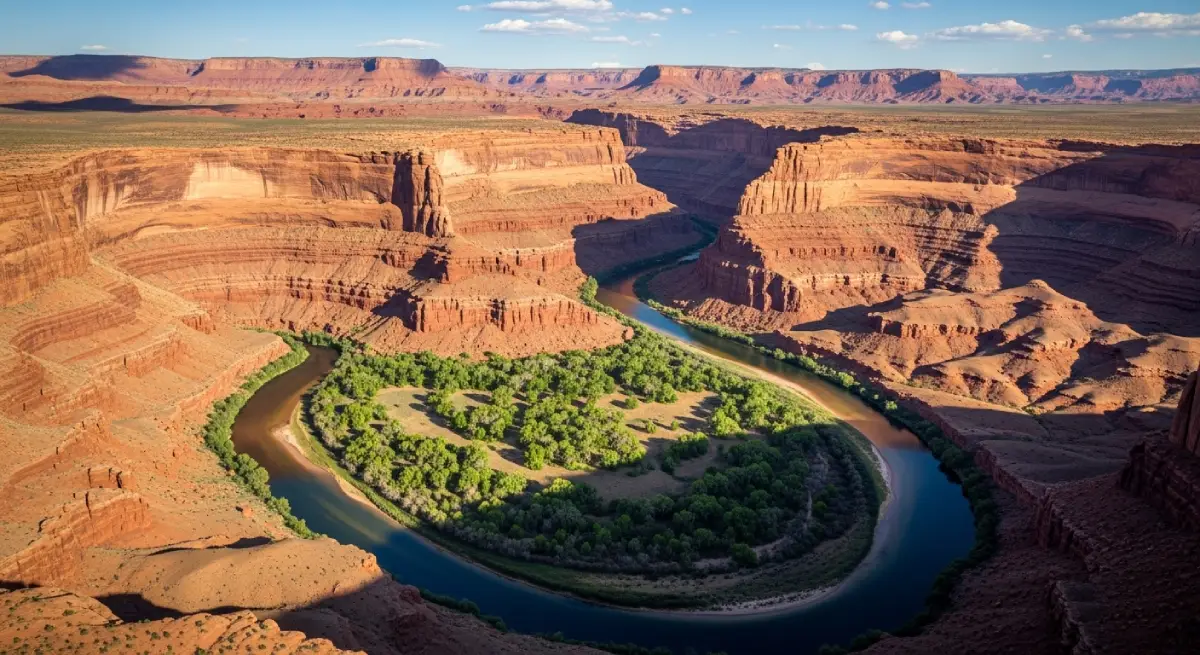
Maximizing Moab experiences:
Focus on activities that showcase unique geological features and slickrock terrain
Build skills progressively through appropriate difficulty sequencing
Allow adequate time for each activity rather than rushing through multiple attempts
Engage with local experts who understand current conditions and optimal timing
Maintain environmental awareness that preserves access through responsible recreation
The Bottom Line: Moab Activities as Transformative Experiences
Moab activities operate in a category entirely their own, where 200 million years of geological processes created adventure opportunities that reward preparation, skill development, and genuine engagement rather than passive tourism. The landscape doesn't accommodate casual approaches—it provides immediate feedback about the difference between adequate preparation and hopeful improvisation in an environment where desert conditions and technical terrain demand respect.
Whether you focus on off-road driving that builds genuine 4x4 skills, hiking that teaches desert survival and navigation, rock climbing on world-class sandstone, or combinations that showcase multiple aspects of this unique environment, success depends on approaching Moab as an opportunity for learning rather than just entertainment consumption.
The most transformative Moab experiences come from understanding that this destination offers education about geological time, environmental adaptation, and personal capability through activities that exist nowhere else—requiring preparation and respect that casual tourism never demands.
Ready to experience Moab's legendary off-road terrain? Cliffhanger Jeep Rentals provides the purpose-built vehicles, local expertise, and comprehensive support that transform Moab activities from theoretical possibilities into successful achievements that build genuine skills while accessing terrain found nowhere else on Earth.
Discover why Moab activities define desert adventure through Cliffhanger Jeep Rentals—where professional equipment and local knowledge eliminate complications while maximizing the experiences that make this destination legendary.

